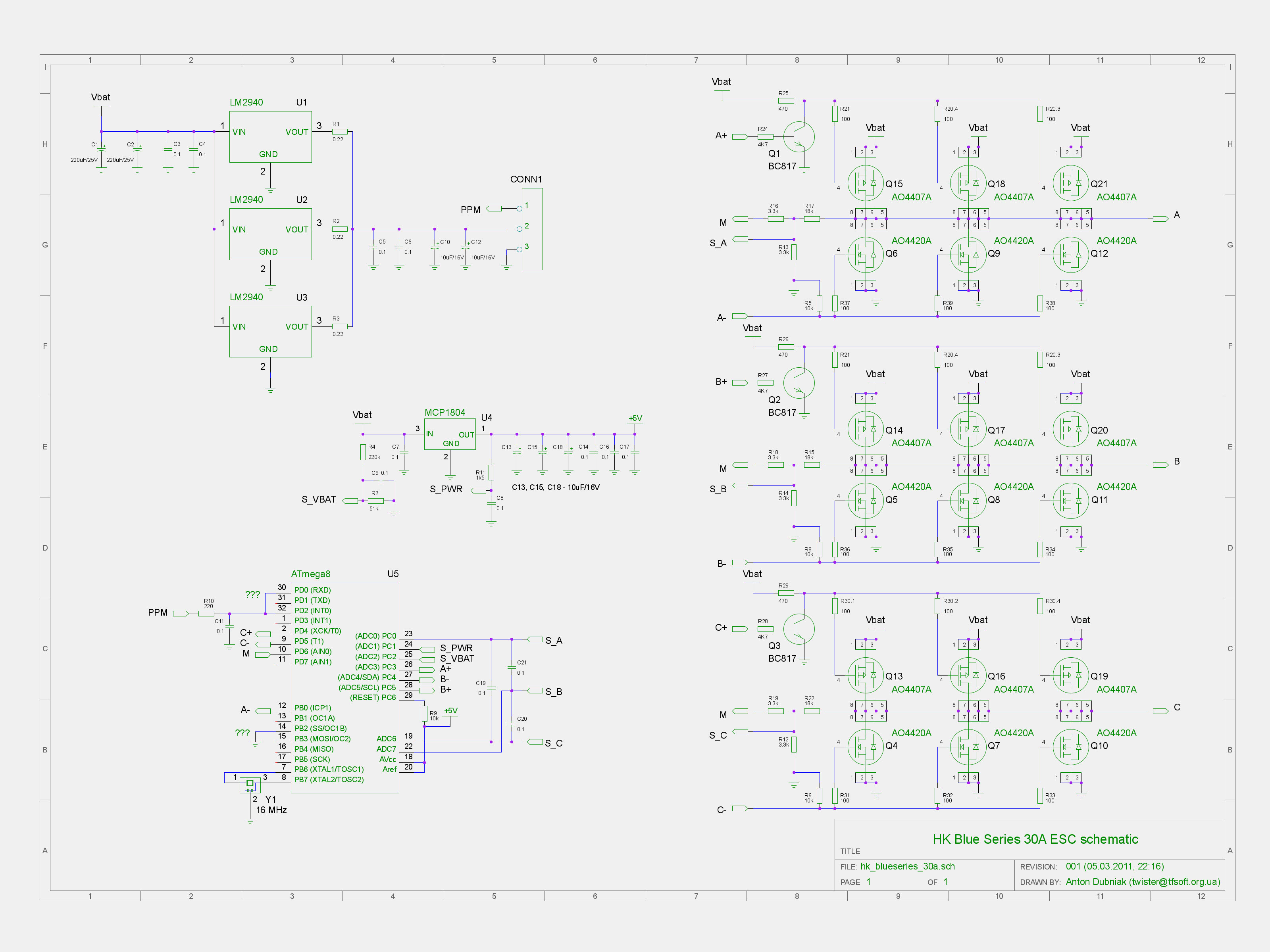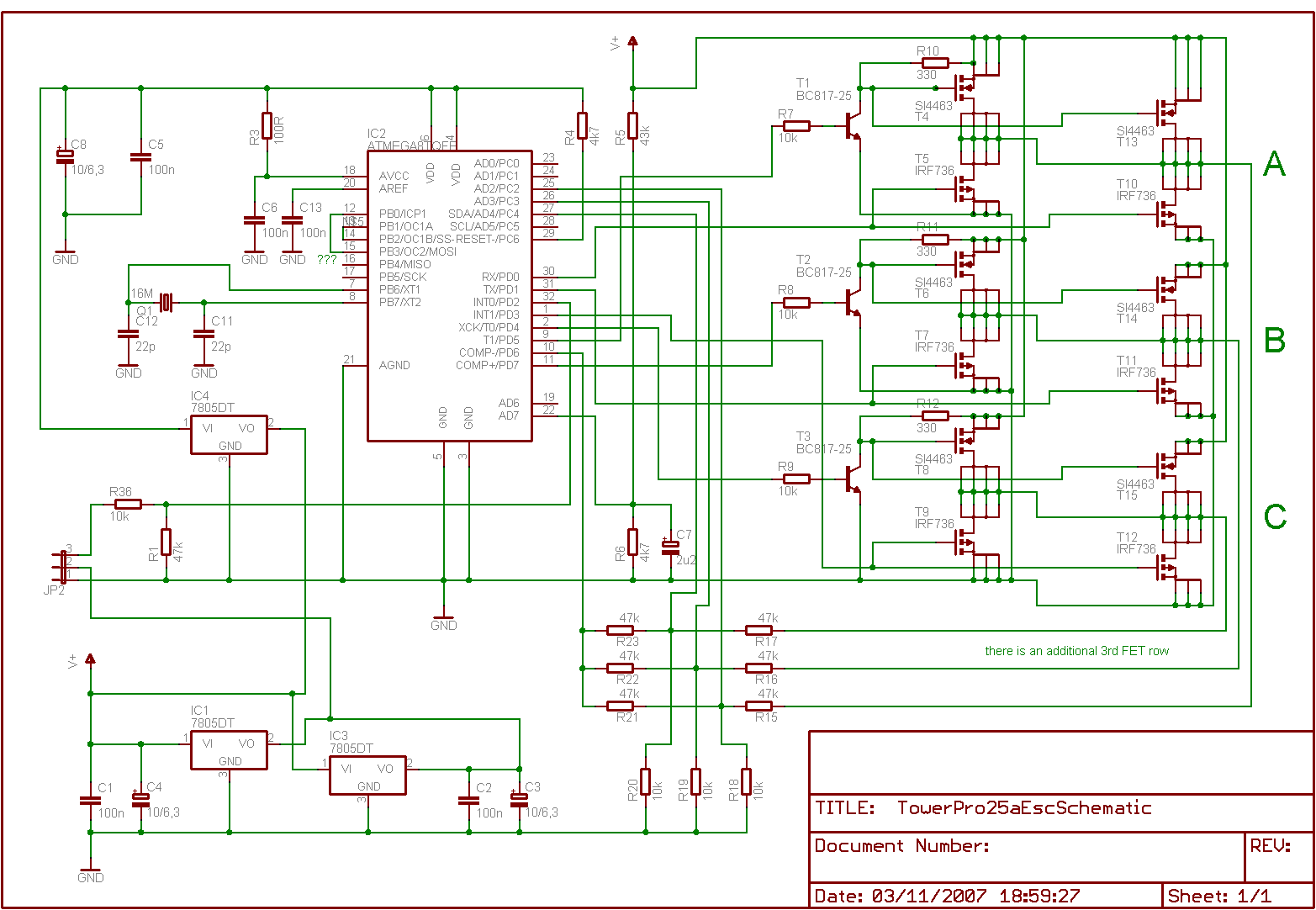shaddai
Active member
So, I've been monkeying around with some 8 bit PIC microcontroller stuff & having a blast making LED's blink in all sorts of wonderful patterns ;D I think I've found a new hobby!!
Figured I'd step it up a notch & drive a brushless 3 phase dc motor now...which leads me to having to pick mosfets to actually do the switching with the pins of the microcontroller driving the gate of the mosfet. There's where I'm struggling. I'm having a case of thick knucklehead when it comes to understanding the whole Qg specification.
I've got 5v @ 20ma to feed to a gate on a Mosfet, which will in turn switch a max of 10v @ 20A (most likely much less), but don't quite understand how to get from the available max power from the PIC & turn it into a Qg spec. Can someone wiser than I 'splain it?
Thanks in advance...
todd
Figured I'd step it up a notch & drive a brushless 3 phase dc motor now...which leads me to having to pick mosfets to actually do the switching with the pins of the microcontroller driving the gate of the mosfet. There's where I'm struggling. I'm having a case of thick knucklehead when it comes to understanding the whole Qg specification.
I've got 5v @ 20ma to feed to a gate on a Mosfet, which will in turn switch a max of 10v @ 20A (most likely much less), but don't quite understand how to get from the available max power from the PIC & turn it into a Qg spec. Can someone wiser than I 'splain it?
Thanks in advance...
todd




